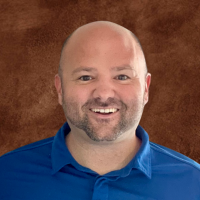We all experience anxiety. For example, speaking in front of a group can make us anxious, but that anxiety also motivates us to prepare and practice. Driving in heavy traffic is another common source of anxiety, but it helps keep us alert and cautious to avoid accidents. However, when feelings of intense fear and distress become overwhelming and prevent us from doing everyday activities, an anxiety disorder may be the cause.
Anxiety disorder health concern in the US
Anxiety disorder is the most common mental health concern in the United States. An estimated 40 million adults in the U.S. (18%) have an anxiety disorder. Meanwhile, approximately 8% of children and teenagers experience an anxiety disorder. Most people develop symptoms before age 21.
Contact us to schedule an appointment.
Anxiety disorder is a group of related conditions, each having unique symptoms. However, all anxiety disorders have one thing in common: persistent, excessive fear or worry in situations that are not threatening. People typically experience one or more of the following symptoms:
Emotional symptoms:
- Feelings of apprehension or dread
- Feeling tense or jumpy
- Restlessness or irritability
- Anticipating the worst and watching for signs of danger
Physical symptoms:
- Pounding or racing heart and shortness of breath
- Sweating, tremors and twitches
- Headaches, fatigue and insomnia
- Upset stomach, frequent urination or diarrhea
* Most Common Anxiety Disorders *
Generalized Anxiety Disorder, Panic Disorder, Social Anxiety Disorder
People with generalized anxiety disorder display excessive anxiety or worry for months and face several anxiety-related symptoms.
Symptoms include:
- Restlessness or feeling wound-up or on edge
- Being easily fatigued
- Difficulty concentrating or having the mind go blank
- Irritability
- Muscle tension
- Difficulty controlling the worry
- Sleep problems (difficulty falling or staying asleep or restless, unsatisfying sleep)
People with panic disorder have recurrent unexpected panic attacks, which are sudden periods of intense fear that may include palpitations, pounding heart, or accelerated heart rate; sweating; trembling or shaking; sensations of shortness of breath, smothering, or choking; and feeling of impending doom.
Symptoms include:
- Sudden and repeated attacks of intense fear
- Feelings of being out of control during a panic attack
- Intense worries about when the next attack will happen
- Fear or avoidance of places where panic attacks have occurred in the past
People with social anxiety disorder (“social phobia”) have a marked fear of social or performance situations in which they expect to feel embarrassed, judged, rejected, or fearful of offending others.
Symptoms include:
- Feeling highly anxious about being with other people and having a hard time talking to them
- Feeling very self-conscious in front of other people – worries about feeling humiliated, embarrassed, rejected or fearful of offending others
- Being very afraid that other people will judge them
- Worrying for days or weeks before an event where other people will be
- Staying away from places where there are other people
- Having a hard time making and keeping friends
- Blushing, sweating, or trembling around other people
- Feeling nauseous or sick to your stomach when other people are around
Physical health conditions, like heart disease, overactive thyroid (hyperthyroidism), low blood sugar or taking certain medications can imitate or worsen anxiety disorders. Therefore, it is often recommended that a doctor perform an evaluation involving a physical examination, an interview and lab tests. After ruling out an underlying physical illness, your doctor may refer you to a mental health professional for a thorough mental health evaluation because anxiety disorders often co-exist with other related conditions, such as depression or obsessive-compulsive disorder.
Using the Diagnostic and Statistical Manual of Mental Disorders (DSM) a mental health professional is able to identify the specific type of anxiety disorder causing symptoms as well as any other possible disorders that may be involved. Tackling all disorders through comprehensive treatment is the best strategy for recovery.
Risk Factors
Researchers are finding that genetic and environmental factors are risk factors for anxiety disorders. Specific factors include:
- Shyness or behavioral inhibition in childhood
- Being female
- Having few economic resources
- Being divorced or widowed
- Exposure to stressful life events in childhood and adulthood
- Anxiety disorders in close biological relatives
- Parental history of mental disorders
- Elevated afternoon cortisol levels in the saliva (specifically for social anxiety disorder)
Anxiety disorders are generally treated with psychotherapy, medication, or both.
Psychotherapy
Psychotherapy or “talk therapy” can help people with anxiety disorders. To be effective, psychotherapy must be directed at the person’s specific anxieties and tailored to his or her needs. A typical “side effect” of psychotherapy is temporary discomfort involved with thinking about confronting fearful situations.
Cognitive Behavioral Therapy (CBT)
CBT is a type of psychotherapy that can help people with anxiety disorders. It teaches a person different ways of thinking, behaving, and reacting to anxiety-producing and fearful situations. CBT can also help people learn and practice social skills, which is vital for treating social anxiety disorders.
Two specific stand-alone components of CBT used to treat social anxiety disorder are cognitive therapy and exposure therapy. Cognitive therapy focuses on identifying, challenging, and then neutralizing unhelpful thoughts underlying anxiety disorders. Exposure therapy focuses on confronting the fears underlying an anxiety disorder in order to help people engage in activities they have been avoiding. Exposure therapy is used along with relaxation exercises and/or imagery. One large study, a meta-analysis, pulled together all of the previous studies and calculated the statistical magnitude of the combined effects and found that cognitive therapy was superior to exposure therapy for treating social anxiety disorder.
CBT may be conducted individually or with a group of people who have similar problems. Group therapy is particularly effective for social anxiety disorder. Often “homework” is assigned for participants to complete between sessions.
Self-Help or Support Groups
Some people with anxiety disorders benefit from joining a self-help or support group and sharing their problems and achievements with others. Internet chat rooms may also be useful, but any advice received over the Internet should be used with caution, as Internet acquaintances have usually never seen each other and false identities are common. Talking with a trusted friend or member of the clergy can also provide support, but it is not necessarily a sufficient alternative to care from a trained, licensed and experienced clinician.
Stress-Management Techniques
Stress management techniques and meditation can help people with anxiety disorders calm themselves and may enhance the effects of therapy. While there is evidence that aerobic exercise has a calming effect, the quality of the studies is not strong enough to support its use as treatment. Since caffeine, certain illicit drugs, and even some over-the-counter cold medications can aggravate the symptoms of anxiety disorders, avoiding them should be considered. Check with your physician or pharmacist before taking any additional medications.
The family can be important in the recovery of a person with an anxiety disorder. Ideally, the family should be supportive and not perpetuate their loved one’s symptoms. In cases where the family system is strained and unsupportive, group therapy is an option.
Medication does not cure anxiety disorders but often relieves symptoms. Medication is prescribed by a psychiatrist, psych mental health nurse practitioner (PMHNP, APRN) or a primary care provider. A few states allow psychologists to prescribe psychiatric medications.
Medications are sometimes used as the initial treatment of an anxiety disorder, or are used only if there is insufficient response to a course of psychotherapy. In research studies, it is common for patients treated with a combination of psychotherapy and medication to have better outcomes than those treated with only one or the other.
The most common classes of medications used to combat anxiety disorders are antidepressants, anti-anxiety drugs, and beta-blockers (search Mental Health Medications). Be aware that some medications are effective only if they are taken regularly and that symptoms may recur if the medication is stopped.
Antidepressants
Antidepressants are used to treat depression, but they also are helpful for treating anxiety disorders. They take 4 to 6 weeks to start working and may cause side effects such as headache, nausea, or difficulty sleeping. The side effects are usually not a problem for most people, especially if the dose starts off low and is increased slowly over time.
Please Note: Although antidepressants are safe and effective for many people, they may be risky for children, teens, and young adults. A “black box” warning—the most serious type of warning that a prescription can carry—has been added to the labels of antidepressants. The labels now warn that antidepressants may cause some people to have suicidal thoughts or make suicide attempts. For this reason, anyone taking an antidepressant should be monitored closely, especially when they first start taking the medication.
Anti-Anxiety Medications
Anti-anxiety medications help reduce the symptoms of anxiety, panic attacks, or extreme fear and worry. The most common anti-anxiety medications are called benzodiazepines. Benzodiazepines are first-line treatments for generalized anxiety disorder. With panic disorder or social phobia (social anxiety disorder), benzodiazepines are usually second-line treatments, behind antidepressants.
Beta-Blockers
Beta-blockers, such as propranolol and atenolol, are also helpful in the treatment of the physical symptoms of anxiety, especially social anxiety. Physicians prescribe them to control rapid heartbeat, shaking, trembling, and blushing in anxious situations.
Choosing the right medication, medication dose, and treatment plan should be based on a person’s needs and medical situation and history, and done under an expert’s care. Only an expert clinician can help you decide whether the medication’s ability to help is worth the risk of a side effect. Your doctor may need to try several medicines before finding the right one for you.
You and your doctor should discuss:
- How well medications are working or might work to improve your symptoms
- Benefits and side effects of each medication
- Risk for serious side effects based on your medical history
- The likelihood of the medications requiring lifestyle changes
- Costs of each medication
- Other alternative therapies, medications, vitamins, and supplements you are taking and how these may affect your treatment
- How the medication should be stopped. Some drugs can’t be stopped abruptly but must be tapered off slowly under a doctor’s supervision.
Sources:
- National Alliance on Mental Illness (nami.org)
- National Institute of Mental Health (nimh.nih.gov)
- Diagnostic Statistic Manual of Mental Disorders: DSM-IV-TR and DSM-4


























